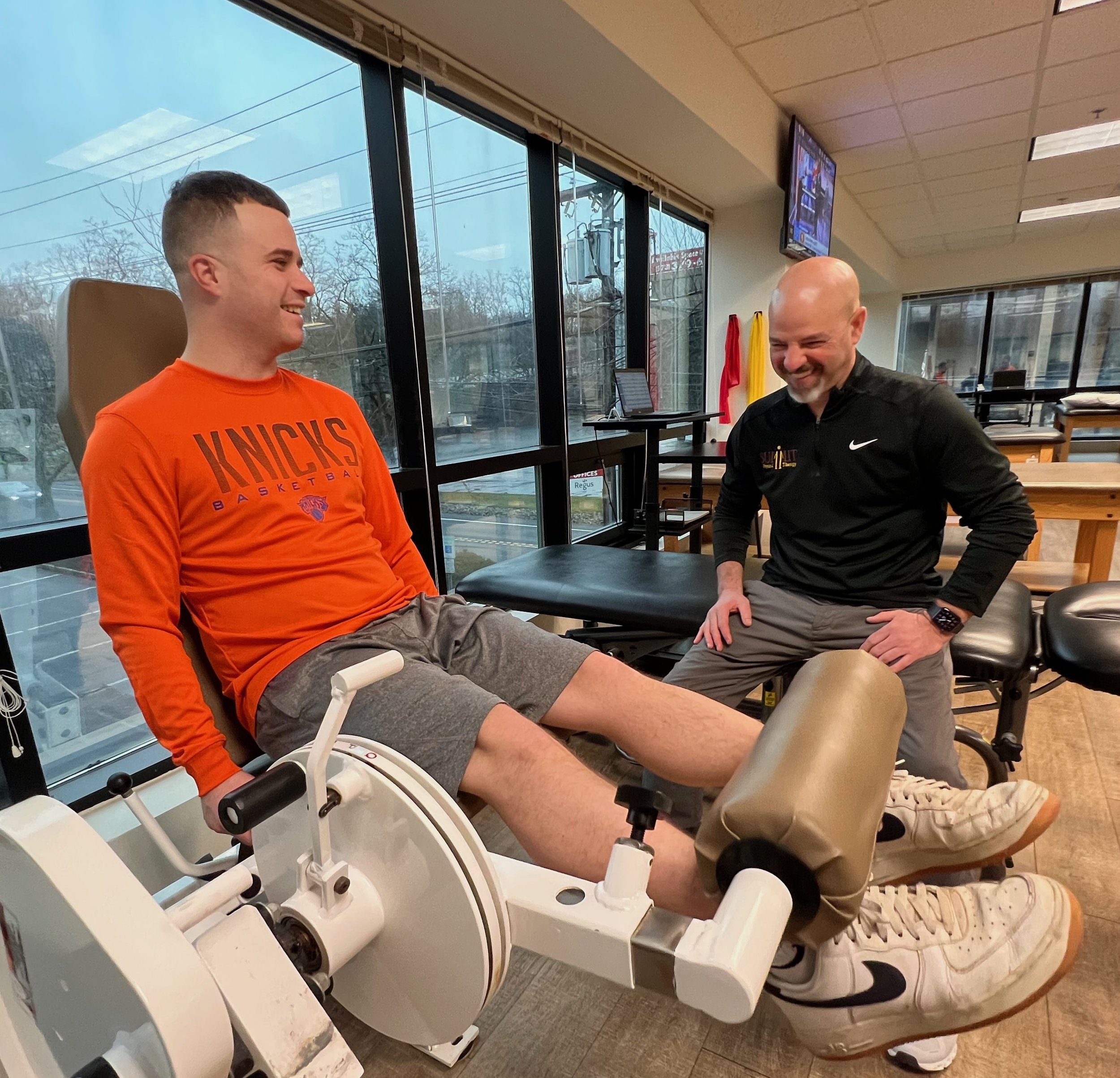5 Tips for A Successful ACL Reconstruction Recovery
If you are considering ACL reconstruction surgery, you are probably wondering what recovery is going to look like. A few of the most common questions we get are:
What does the recovery after ACL surgery entail?
How long until my day-to-day routine is back to normal?
How long until I can return to sports after ACL reconstruction surgery?
In this article, we will focus on factors that you as a patient can control to optimize your recovery. The five tips below will improve your success at meeting specific recovery milestones on time, and ultimately reduce your risk of future re-tear.
1. Pay Careful Attention to Your Swelling
Swelling is the great limiter, and can significantly slow recovery progress. Swelling can also cause pain due to increased pressure in the joint and surrounding tissues. While swelling is completely normal after surgery, the goal should be to reduce swelling to the best of our abilities.
One positive about swelling is that it provides an objective marker of whether you are doing too much activity. In later stages of rehab, any presence of joint swelling has been identified as a risk for ACL re-tear and will be used as criteria to return to plyometrics (jumping), running, and sports.
2. Get It Straight
Fully bending your knee is an important milestone, but fully straightening your knee is the true rockstar.
FULL KNEE EXTENSION IS NEEDED FOR:
Walking without a limp
Standing without getting tired or causing increased swelling
Progression to research-based milestones such as:
Jumping
Running
Playing sports
Can you imagine how tired your muscles would be from standing in a mini-squat all day long? That’s what happens if your knee is not fully straight. This will lead to increased stress on your joint as it is trying to heal, slowing down your overall healing process.
3. Quads are Key
While there are a number of muscles involved in knee health, no muscle is better at protecting the ACL than the quadriceps muscle. The quads are the muscles on the front of the thigh that make your leg “kick” if you are sitting over the edge of a chair. When it comes to your ACL, these muscles are in charge of slowing you down when you are running or stopping you from falling down a flight of stairs.
Early in the ACL reconstruction rehab process, the quads are crucial in making sure your knee does not buckle while standing, walking, or walking down stairs. When you are decelerating, the quads stabilize the knee and stop the joint from sliding in a direction that can injure the ACL.
The faster the pace of the activity, the stronger your quads need to be. Even if you do not plan to return to a sport, it is important that your quads are as strong as possible for the “Oh No” scenario. ACL injuries rarely happen in a predictable scenario. Reducing the risk of further injury comes down to improving your capacity and strength so you are ready when an unexpected situation comes up.
4. Don’t Rush Your Return to Activity
Patients are typically eager to return to the activities they love, which is completely understandable. However, it is crucial to continue all parts of ACL recovery like quadriceps strengthening and improving biomechanics to complete your rehab.
Your recovery plan will often include low-impact cardio very early in the process to make sure that fitness is maintained. While this may not be as challenging as the activities you are used to, it will maintain your fitness level until your strength and control are back to normal.
YOU MAY BE READY TO RETURN TO ACTIVITY WHEN THESE CRITERIA ARE MET:
Agreement between physical therapist and ACL surgeon
No swelling
Full knee extension
Able to do repetitions of certain exercises (e.g., single-leg squat, single-leg calf raise)
Able to perform repeated forward and vertical hopping
5. Strength Is the Best Predictor of a Great Outcome
When muscles do their jobs correctly, everyday circumstances should not strain or tear ligaments. This is why muscle strength is imperative to optimal ACL recovery. All other facets of a good rehabilitation including balance, stability, range of motion, and ability to perform sport-specific tasks, all require strength to be performed well.
Quadriceps strength is not the only important muscle group in ACL rehabilitation. Different muscle groups help support different motions to protect your ACL. The two most important directions to stabilize are forward stability when decelerating or stopping and rotational stability with cutting or twisting.
FORWARD/BACKWARD STABILITY IS CONTROLLED BY:
Quads
Hamstrings
Calf muscles
THE KNEE’S ROTATIONAL STABILITY IS CONTROLLED BY:
Gluteus medius
Gluteus maximus
Hamstrings
“Core” and trunk muscles
What will your ACL Reconstruction Recovery Look Like?
These tips should be the focus for any ACL reconstruction recovery, no matter what your end goal or level of athleticism is. If you are planning to undergo ACL reconstruction surgery or are looking for individualized care to get you back to your desired level of function, request an appointment with us today and we’ll get you on track for a successful recovery.
As a final note, it’s important to keep in mind that ACL reconstruction surgery isn’t the only option for an ACL tear. If you are interested in learning about non-operative options, our team can provide that during an initial evaluation.



